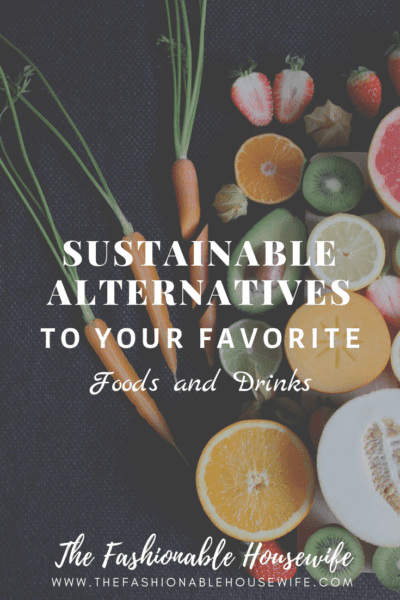
As a consumer, you make choices each day. When it comes to environmentally-damaging purchases, your mind may jump to plastic products and chemicals. However, you also have the opportunity to choose more sustainable alternatives and environmentally-friendly, or socially responsible options when buying food and drinks.
What is Sustainable Food?
Some of the more obvious examples are the products you find in the store with organic and fairtrade certifications. While there is no unified measure or marker of food sustainability, researching the products you buy can help you make more informed consumer decisions.
Seek out food companies that do the following:
- Limit the use of nonrenewable resources
- Help support local economies where the food is grown
- Protect the environment from byproducts, pollution, deforestation, and overfarming
- Protect animal welfare
- Practice responsible water use and management
While shopping for sustainable foods and drinks takes organization and patience and may be a bit pricier, it doesn’t mean you have to skip out on your favorite beverages and meals. The next time you go grocery shopping, consider switching out the usual items on your list with these sustainable alternatives.
Anything But Almond Milk
While any choice you make for a milk alternative is substantially better for the environment than dairy milk, almond milk also has some very apparent flaws.
According to the New York Times, growing just 16 almonds requires 15.3 gallons of water. Also, the mass production of almond milk puts the bee population in jeopardy. As the demand for almonds increases, more almond crops have to be grown. Bees are needed to pollinate the almonds, and many bees die from the pesticides used by farmers who don’t practice sustainable methods of production.
Swear Off Coffee Blends
Coffee is another crop that, when not produced responsibly, can cause severe problems for communities and the environment. Choosing single origin coffee is a great way to stop supporting coffee manufacturers who use poor agricultural practices and pay farmers low wages. If you know exactly where your coffee comes from, you can look into the environmental practices and work conditions at the given farm. CBD coffee is a great choice too.

Swap Out Single-Serve Juice and Soda
While they may be convenient, if you can avoid single-serve water bottles, juice, and soda, you will help cut back on plastic waste. Instead of buying single-serve beverages, try using a reusable pitcher to make fruit-infused water. Getting a soda maker is another excellent option for those who love their sparkling water and sodas. Making your own juice is a great way to cut back on plastic waste while ultimately getting fresher, tastier juice.
Try Beans and Lentils as Sources of Protein
Beans and lentils are excellent sources of fiber and protein, and they also contain many other essential nutrients. Choosing to use beans and lentils over meat can help to lower the world’s carbon footprint. These crops thrive on smaller quantities of water and are an inexpensive and sustainable alternatives to animal protein. Animal farming is a significant contributor to global warming and climate change because the gas produced ends up in the ozone layer.
Plan Meals Around In-Season Produce
Buying your produce at a local farmers market and sticking to what’s in season is essential to sustainable eating. When you choose to eat fruits and vegetables that aren’t in season, they have to be imported from far away places that have the climate to support their growth. Buy shopping in-season locally, you not only reduce the packaging and fuel required for overseas transportation, but you support your local economy.
Only Order Responsibly-Farmed Seafood
When purchasing seafood, it’s important to be selective. Seafood harvested commercially is often overfished and poorly farmed. To protect vulnerable ecosystems, it’s best to choose seafood that is in season and harvested responsibly. Keeping up to date on what fish are in season and what fish are in abundance is a great way to choose sustainable alternaitves.
Sustaining a Sustainable Lifestyle
Choosing to switch to sustainable alternatives in your food and drinks doesn’t have to be a hard transition. You don’t necessarily have to cut out the foods you love; you just have to do a little research and buy from responsible companies.
As people become more environmentally and socially conscious, the market changes. This encourages companies to reconsider their values and start embracing sustainable practices. If you want to do what you can to protect the earth, start making the switch to sustainable alternatives. When enough people change their personal habits, the corporations will follow their lead to stay competitive.



